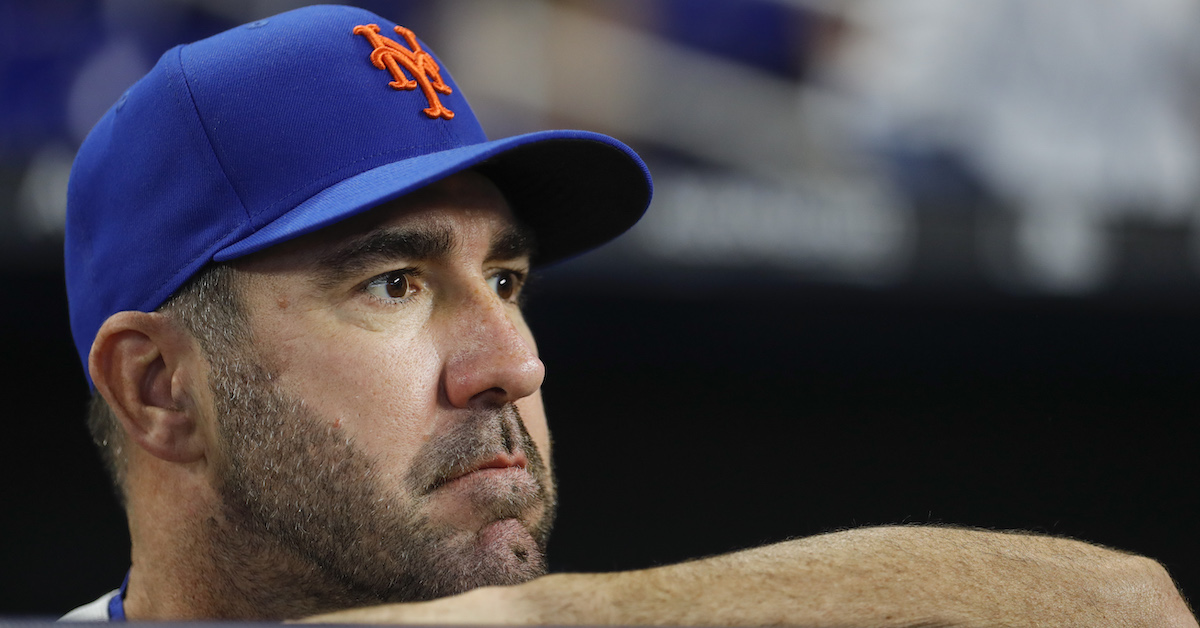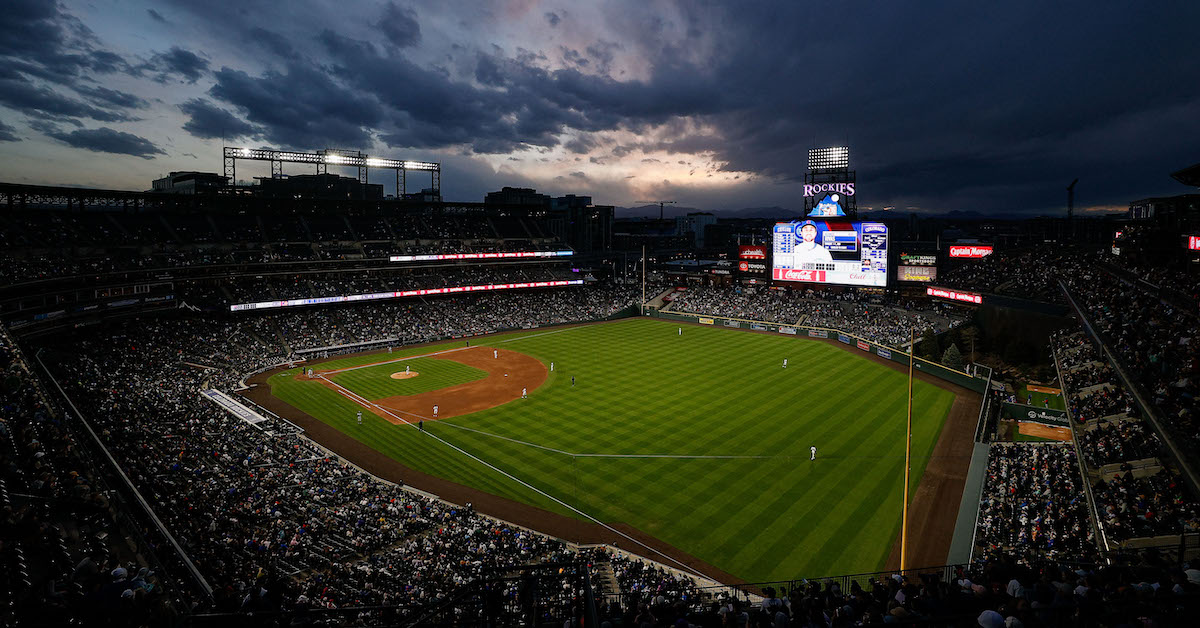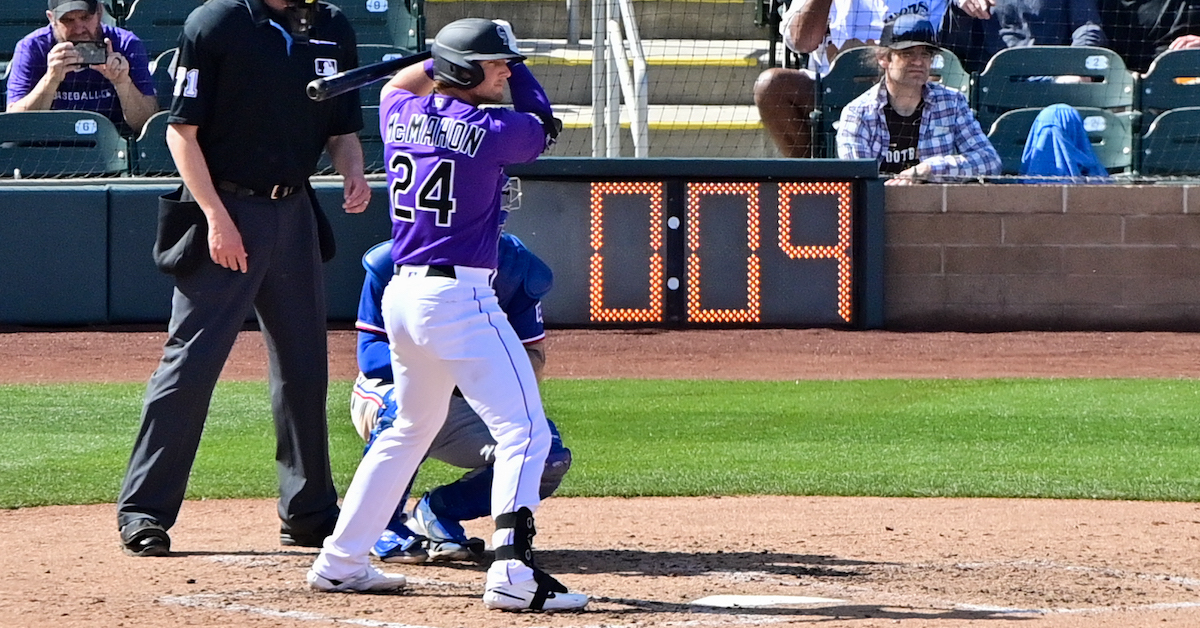Zac Gallen has a 3.16 ERA over 82 big-league starts. He also has just 22 wins, a total that deserves to be far higher. On 29 occasions, the 27-year-old Arizona Diamondbacks right-hander has had either a loss or a no-decision while working five or more innings and allowing two or fewer earned runs. In 20 of those games he’s gone at least six innings, and in eight of them he’s gone at least seven. Moreover, there have been no undeserved Ws. The most earned runs Gallen has allowed while being credited with a win is three, and that has only happened twice.
I recently asked the hard-luck hurler about his run of bad fortune.
“I’m aware of it,” responded Gallen, whose career record stands a modest 22-23. “It’s something my family looks at and kind of jokes around with, that I’m an unlucky pitcher in the sense of getting wins. But my job is to throw up as many zeros as I can and keep us in the game. As baseball has gone on, the win has also been, for lack of a better word, devalued. Starters aren’t going as long in games, which contributes to that.”
Not allowing any runs — regardless of the number of innings you throw — is the ultimate goal for any pitcher, and Gallen had baseball’s best scoreless streak last season. Over a seven-start stretch from August 8 to September 11, he went 44-and-third consecutive innings without allowing a runner to cross the plate. That he was credited with a win in all but one of those starts isn’t exactly surprising, but at the same time, Gallen has learned not to to take anything for granted. Four times in his career he’s gone six or more scoreless innings without a decision.
“It was awesome,” Gallen said of his impressive string of zeros. “I’ve kind of taken on the thought that you really have to earn your wins. [Manager] Torey [Lovullo] talks about it all the time. Pitching deep into games is how starters are often going to earn those wins, so that is something I take pride in.”
Gallen went at least seven innings 10 times last year on his way to a 12-4 record — which, like his career ledger, should have been much better. With solid run support, the snake-bitten D-Back could easily have been a 20-game winner. Devalued or not, that number has long been a mark of distinction for starting pitchers. That in mind, is 20 a goal for Gallen this year?
“My goal for us is to make the playoffs,” Gallen told me. “If 20 wins falls within that, great. If it’s 10 wins — whatever the number — that’s fine, too. As long as we’re in the playoffs, I don’t care. I just want to pitch well and help us get there.”
———
RANDOM HITTER-PITCHER MATCHUPS
Bobby Bonds went 2 for 22 against Lowell Palmer.
Jeffrey Leonard went 3 for 23 against David Palmer.
Chuck Hinton went 4 for 24 against Jim Palmer.
Dean Palmer went 6 for 7 against Shane Reynolds.
Luke Easter went 4 for 4 against Cuddles Marshall.
———
Watching Rafael Devers get called out on strikes on Opening Day because the home plate umpire ruled that he wasn’t ready in time brought to mind something Rich Hill said following a spring training start. Asked about the ramifications of the new pitch clock rule, the veteran left-hander aptly brought up common sense — something MLB’s powers-that-be seemingly don’t always consider.
“I’m not against a faster game — there’s no question about that — but I am 100% against an outcome that is a result of non-competitive action,” said Hill. “I think everybody should be.”
“Maybe five more seconds,” added Hill. “Again, I’m not against a fast game, it’s just that it’s tough to watch some of these results, like getting ball four, or a guy striking out [without a pitch being thrown]. It’s not fair to anyone. The fans are booing. They want to see action. They want to see a quicker game — there are positives — but that big drawback is such a negative.”
I’m on board with Hill’s opinions. An extra five seconds on the pitch clock is far from a bad idea, and more importantly, ending a plate appearance without a pitch being thrown is anathema to fair play. That said, if the rule is indeed going to be enforced, I’d like to suggest an official-scoring change. A pitcher isn’t charged with an earned run when an extra-innings zombie runner (the worst rule in the history of professional sports) scores, so why would a pitcher be credited with a K on a pitch he never threw? The hurler who “struck out” Devers did so via a non-competitive action, and statistically speaking, that’s illogical. Accomplishments should be earned, not arbitrarily assigned.
———
A quiz:
The New York Yankees franchise record for career games started is co-held by two pitchers. Who are they?
The answer can be found below.
———
NEWS NOTES
The Midwest League’s Great Lakes Loons have hired John Vicari to work alongside Brad Tunney in their radio booth this season. A 2021 Ithaca College graduate, Vicari was with the High-A Lake County Captains last year.
Roberto Barbon, who spent 1954 in the Brooklyn Dodgers system before becoming Japan’s first Latin American player, reportedly died last month at age 89. A Cuban-born infielder, Barbon played for the Hankyu Braves from 1955-1964, and for the Osaka Kintetsu Buffaloes in 1965.
——-
The answer to the quiz is Whitey Ford and Andy Pettitte, with 438 starts each.
———
Tyler Rogers had just finished his rookie season with the San Francisco Giants when he led Sunday Notes in October 2019. The subject at hand was the righty’s submarine delivery, which confounds enough hitters to make him effective despite a fastball that ranks, per Statcast, in the first percentile for velocity, and in the second percentile for spin. Thanks largely to his uniqueness, Rogers has a 2.92 ERA and a 3.23 FIP over 195 relief outings comprising 203-and-a-third innings.
What has the twin brother of teammate Taylor Rogers learned about how his stuff plays from analytics?
“Nothing, to be honest,” Rogers told me on my recent visit to Giants camp. “The Rapsodos, and the TrackMans we have in the bullpen, don’t even pick me up. Plus, I never really dive into the numbers. That’s for the coaches, and the people who know what they’re looking at. I just go out there and pitch. I’m pretty much old school in that regard.”
Do hitters ever tell him how his pitches play, particularly when they’re thrown in certain areas of the zone?
“Oh, they tell me,” the right-hander responded with a laugh. “They definitely tell me that”
———
MLB announced that a total of 269 players representing 19 different countries and territories outside of the 50 United States were on Opening Day rosters and inactive lists. The Dominican Republic had the most, with 104, followed by Venezuela (62), Cuba (21), Puerto Rico (19), Mexico (15), Canada (10), Japan (8), Colombia (7), Curaçao (4), Panama (4), South Korea (4), the Bahamas (2), Nicaragua (2), Aruba (1), Australia (1), Brazil (1), Germany (1), Honduras (1), and Taiwan (1).
———
FOREIGN AFFAIRS
The 2023 NPB season kicked off this week with the Rakuten Golden Eagles beating the Nippon Ham Fighters 3-1. Masahiro Tanaka went five-and-two-thirds innings for the win, while Maikel Franco had three hits and drove in a pair of runs.
The Tokyo Yakult Swallows topped the Hiroshima Carp 4-0 behind seven shutout innings by Yasuhiro Ogawa and a home run by Munetaka Murakami. The latter is coming off of a season where he slashed .318/.458/.711 with 56 home runs.
Opening Day in the KBO was highlighted by a 12-10 Doosan Bears win over the Lotte Giants. Jose Rojas hit a walk-off, three-run homer in the bottom of the 11th inning to end the high-scoring affair.
Anthony Alford and Baek-ho Kang combined to go went 7-for-9 with six RBIs to lead the KT Wiz to an 11-6 win over the LG Twins. Wes Benjamin threw six scoreless innings for the winning side.
Shin-Soo Choo homered in SSG Landers’ 4-1 win over the Kia Tigers. The 40-year-old DH was also called out while attempting a straight steal of home.
———
C.J. Cron has had a solid career with the bat, particularly in the power department. Now in his 10th big-league season, and his third with the Colorado Rockies, the 33-year-old first baseman has averaged 28 home runs over the previous four non-COVID campaigns. And he’s off to a stellar start in 2023. Through his first two games, Cron is 7-for-11 with a pair of walks and three bombs.
I first interviewed the right-handed-hitting slugger in 2013 when he was a Los Angeles Angels prospect playing in the Arizona Fall League. When I caught up to him in Rockies camp a few weeks ago, I asked him if his career path has gone much as he’d expected. His response quickly segued into a nod to one of the best hitters of our generation.
“I never really had an idea of what it was going to be like,” claimed Cron. “I kind of just went step by step, always trying to play well and help the team as much as possible. Obviously, when you come into the league playing behind Albert Pujols, the opportunity might be a little more limited than you would love. But it was so great to learn under him. Watching how he went about his business — his solid baseball routine, how he hit in the cage, the way he hit in BP, the way he approached the game — taught me a lot.”
I asked Cron about the degree to which he followed Pujols’s routine.
“Not specific drills, and stuff like that,” Cron responded. “But definitely how often he hit in the cage. He was in there all the time. So yeah, I was in the cage quite a bit too. Little things like that.”
Cron has 177 career home runs to go with a 112 wRC+. He made his first All-Star team last year.
———
FARM NOTES
New York Mets prospect Brett Baty went 4-for-5 with a pair of home runs yesterday as Triple-A Syracuse topped the Worcester Red Sox 16-6. The 23-year-old third baseman is No. 23 on our Top 100.
Keston Hiura, who cleared waivers after being DFA’d by the Milwaukee Brewers last week, homered yesterday in Triple-A Nashville’s 5-4 win over Louisville. The former first-rounder also drew three walks.
Daniel Murphy has signed with the independent Atlantic League’s Long Island Ducks. A veteran of 12 big-league seasons, the 38-year-old (as of yesterday) infielder last played with the Colorado Rockies in 2020.
Kole Cottam signed with the Atlantic League’s Frederick Baseball Club. A 25-year-old catcher out of the University of Kentucky, Cottam has been in the Red Sox system since 2018 and spent last year in Double-A Portland and Triple-A Worcester.
———
When Brandon Hyde met the media following Thursday’s 10-9 win at Fenway Park, the Baltimore manager was asked by The Athletic’s Dan Connolly about Adley Rutschman’s big day. As Connelly pointed out, no Orioles player going back to 1954 — the franchise’s first year in Baltimore — had ever had an Opening Day where he logged five hits and reached base six times. To Hyde, the 5-for-5-with-a-walk-and-a-home-run performance wasn’t so much surprising as it was a sign of what the 25-year-old catcher is capable of.
“If you do anything historical for the Baltimore Orioles, it’s… there have been a lot of great players who have worn this uniform,” said Hyde. “It’s not the only time you’re going to say that about Adley. He’s going to be doing other things that are firsts, as well. He’s just a super special player. He’s a really good hitter and he hasn’t even played a full year yet. Good things are coming.”
Rutschman — the runner-up in last year’s A.L. Rookie-of-the-Year voting — told reporters that he had no idea he’d gone into the record books, only that he was glad they’d won a “well-fought”game. That it was his first big-league Opening Day — the erstwhile Oregon State Beaver made his MLB debut in mid-May — did resonate with Rutschman.
“I’ve had a couple of Opening Days in college, down in Arizona in front of 5,000 people, and this definitely blows that right out of the water,” said Rutschman. “To have that close game in the ninth inning, and the crowd getting so loud, I was sitting there thinking, ‘This is pretty cool.’”
———
LINKS YOU’LL LIKE
Team Japan manager Hideki Kuriyama was critical of WBC organizers for changing the bracket mid-tournament, a decision that scrapped his plans to pitch Roki Sasaki against the United States. Jason Coskrey has the story at The Japan Times.
MLB.com’s Anne Rogers wrote about Melissa Lambert, who as the club’s Director of Behavioral Science is the first-ever woman to be part of the Kansas City Royals’ on-field staff.
The Athletic’s Andrew Baggerly wrote an ode to the recently-retired Sergio Romo (subscription required).
Arte Moreno recently cited economics as the main reason why the Angels aren’t sending their radio broadcasters on the road this year. Sean Keeley wrote about the unpopular owner’s inexcusable decision — and his equally embarrassing explanation — for Awful Announcing.
The editorial board of The Baltimore Sun has issues with Orioles chairman and CEO John Angelos twice stating — unsolicited, no less — that he will share information about the team’s financials, only to then criticize one of the publication’s writers for expecting him to keep his word.
———
RANDOM FACTS AND STATS
Miguel Cabrera played in his 20th career Opening Day on Thursday. The Detroit DH doubled in one of his four at-bats, giving him 3,089 career hits, tying him with Ichiro Suzuki on MLB’s all-time list. Miggy has since recorded hit number 3,090 and is now 24th all-time.
Paul Goldschmidt had a stolen base on Opening Day and has been successful on each of his last 23 attempts. The streak dates back to the 2019 season.
The Chicago White Sox went 19-3 against the Washington Senators in 1909. They beat Walter Johnson six times, by final scores of 1-0, 1-0, 1-0, 2-0, 3-0. and 6-3.
Pete Alexander and Christy Mathewson finished their Hall of Fame careers with 373 wins each. Alexander threw 436 complete games and had a 135 ERA+. Mathewson threw 435 complete games and had a 136 ERA+.
The Detroit Tigers returned Maury Wills, whom they’d purchased on an option basis, to the Los Angeles Dodgers on today’s date in 1959. Wills went on to make his MLB debut that summer, then lead in the National League in stolen bases each year from 1960-1965.
The Milwaukee Brewers signed Willie Randolph as a free agent on today’s date in 1991. The longtime New York Yankees second baseman, who had spent the previous season with the Los Angeles Dodgers and Oakland Athletics, went on to slash .327/.424/.374 over 512 plate appearances in his one-year Milwaukee stint.
Players born on today’s date include Dick “The Monster” Radatz, who was one of the game’s most dominant relievers before arm woes curtailed his career. In his first three seasons with the Boston Red Sox (1962-1964), the Detroit native went a combined 40-21 with 76 saves and a 2.17 ERA over 414 innings. Radatz holds the MLB record for strikeouts in a season by a relief pitcher with 181.
Also born on today’s date was Cotton Pippen, who pitched for the St. Louis Cardinals, Philadelphia Athletics, and Detroit Tigers from 1936-1940. The right-hander from Cisco, Texas had his best season in the Pacific Coast League, winning 20 games with the Oakland Oaks in 1943.









